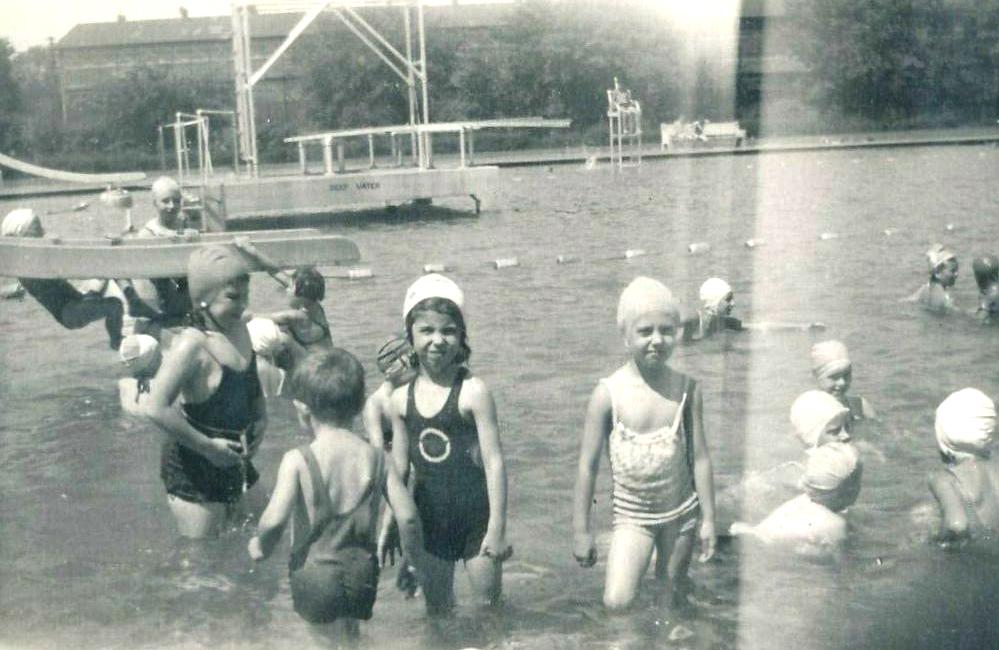
Figure 1.--Here we see kids in a large American swimming pool during July 1939. Notive that almost all of th girls wear bathing caps. 39 . |

|
Recrational sea bathing is a relatively recent phenomrnon beginning at first for the welathy in Britain (late-18th century). At first it was mostly men that were enthusiastic about taking a dip. The women that did dip their toes were concerned abput their hair. Hair styles could be quite elaborate at the time. Various cloth devices, basically hair net wer devised to protect thar hair. Women used bonnets done in silk or otgerr favrics to cover their heads in or even around the water. Women tended to try to their hair covrered outdoors, espeially around the water. Hats and other headwear were almost umiversal. And th elite at seaside resorts were known to devise ornate bathing caps. hese were only for women. Men and children did not normally wear them. The modern bathing cap did not appear until the industrial production of rubber began and people began making rubber and ruberized prpducts. The first rubberized swim cap appeard (1883) when a combination of rising oncomes due to industrialization and improved transport because of the railroads were creating the conditions for modest income families to enjoy seaside vacations. We do not notice children wearin batching cpas in the seaside portaits taken in the late-19th and early-20th century. We begin to see girls wearing bathing capd after World War I. They became increasingly common. We are not sure why, especially because short bobbed hair became stylish (1920s). We think that the increased opening of swimming pool may have been a factor. Caps styled like aviator helmets becme standard. Bathing caps by the time of World War II were common in America (1940s). We are less sure about other countries. During the War, rubber was a strateic material and restricted for commercial use. suctitutes had to be found. Women continued to be concernedcabout maintaining stylish hair which was expensive, explaining theie use of bathing caps to make styled hair last longer. Girls also cpmmonly wore them. a factor here was pobably public swimming pools. Many pools had rules required women and girls with long hair to wear bathing caps (1950s). This was both for sanitartreasons as well as to prevent drain clogs. Highly decorative caps became popular. They were so common that we also see them for beach wear. Colorful petal swim caps became popular (1960s). Men and boys began wearing longer hair (late-1960s). They refused to wear bathing caps. Public pools bean abadoning swim cap requirements for girls.. Women and girls stopped wearing them. They began to be seen as not only old-fashiojed and restrictive, butalsodiscrimitory. They only continued to be worn for comptitive swimming. For some reaon they are still requird in many Italian public swimming pools..
Navigate the Boys' Historical Clothing Web Site:
[Return to the Main swimming costumes and suits page]
[Return to the Main swimming clothing page]
[Return to the Main sport uniform page]
[Introduction]
[Activities]
[Biographies]
[Chronology]
[Cloth and textiles]
[Clothing styles]
[Countries]
[Topics]
[Bibliographies]
[Contributions]
[FAQs]
[Glossaries]
[Images]
[Links]
[Registration]
[Tools]
[Boys' Clothing Home]
